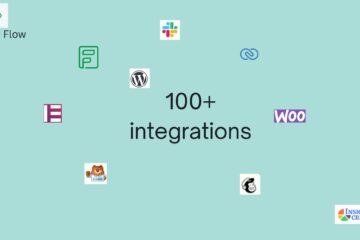Marketing automation technologies assist you by offering intelligent content and obtaining useful data in exchange. But can you afford to keep this data buried in your tool? Is your content still intelligent if it does? No and no, respectively.
Your other apps rely on the data gathered by your marketing automation platform to function properly. Let’s say you used your marketing automation platform to create a fantastic email campaign. Your CRM must be aware of the list of leads created by this campaign in order to begin product sales. To send bills, your accountancy app requires the details of converted leads. Prospects who have signed up for upcoming events should be shown in your event management tool.
Then there’s the follow-up for the data your email marketing platform sent—did those contacts pay their invoices, and did the leads actually attend the events they signed up for? Only with this information will the tool be able to effectively categorize your customers and connect them with truly intelligent advertising.
Maybe, in the end, all of this data makes it to these apps—at the cost of countless hours of manual labour. However, you’ve already lost those leads by the time you direct and distribute data throughout your apps and prepare for your next move. So, what’s the use of gathering extensive data if you can’t do anything with it?
This is why your online marketing solution must work effectively with the various apps you use in order to collect data.
Send site analytics to your team right away.
Let’s imagine your blog received a lot of traffic in the last month, or a certain webpage has a high bounce rate. Should this data be hidden in your marketing automation tool’s bar charts until you find it? Rather, integrate your product with Slack or Zoho Cliq so that everyone on your team is up to date right away. They can then swiftly promote the page or rewrite its content to improve accessibility to the intended audience.
Keep track of your customers’ preferences.
It’s crucial to know who you’re selling to. Non-personalized encounters are a show stopper for three out of every four leads. As a result, the data you gather about your prospects—at every digital interaction point—must be directed to your marketing automation technology.
Consider a leader who did not respond to any of your emails but attended all of your events and seminars. Only a low open rate would be detected by your email instrument (and imply low interest). They are, in fact, legitimate prospects whose preferences are still stored in your event management system. This data is normally sent to you when you combine your tool with apps like Eventbrite or GoToMeeting. Your tool now has additional information about the lead and places them in a segment that receives emails.
Integrations with other lead sources may provide more detailed information on how to segment and communicate with your buyers.
Once you’ve received a nod from a potential client, act quickly.
How fast you take the following step when a customer database is convinced by what you’re offering is critical. Furthermore, the more integrated your apps are, the more informed your actions will be. You may instantly submit a proposal for your service, set an appointment to discuss details, and assign them to a suitable team member if a prospective filled out the contact form on your price page—and your tool is associated with Expensify, Calendly, and Asana. So, for the one time, a potential expressed interest, you can virtually immediately take the next three most appropriate steps.
That’s the power of marketing automation and integrations working together.
Enhance the consumer experience.
Customers nearly never cut ties abruptly—they leave indications that you’re likely to overlook because they’re distributed throughout your various apps. Upset customers are indicated by frequent help desk tickets, many cart abandonments in your e-commerce app, or thumbs down for your videos. Set up an integration that gathers data from all of these apps and alerts your tool when it’s most needed. If a customer has consistently filed grievance tickets and departed their cart twice in a week, for example, it’s time to send them emails that address their issues.
It’s not only about providing the appropriate material to the appropriate people when it comes to autonomous marketing. It’s also about returning the proper data to the right apps so you can deliver even more specific information next time. Integration systems such as Zoho Flow can assist you in accomplishing this by interconnecting your apps and ensuring that they transfer information in a seamless manner.
